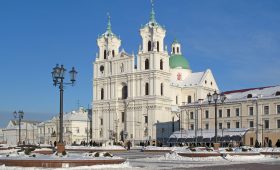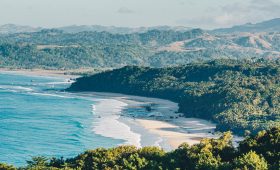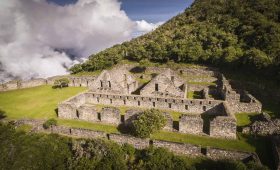Exploring Iona National Park in Angola
Introduction
Welcome to Iona National Park, a remarkable destination in Angola that offers a unique blend of natural beauty and ecological significance. Located in the northern Namib Desert, this park is a testament to the resilience of life in one of the world’s oldest deserts. Join us as we explore the fascinating landscapes and diverse wildlife that make Iona National Park a place worth visiting.
Location and Geography
Iona National Park is situated in southwestern Angola, covering an area of over 15,000 square kilometers. It is part of the northern Namib Desert, also known as the Kaokoveld Desert, which stretches along the Atlantic Ocean for 180 kilometers. The park’s geography is characterized by its proximity to the Benguela Current, which creates a rich offshore ecosystem. To the east, the park rises to meet the Tchamaline and Cafema mountains, forming the base of the Great Escarpment. The park is bordered by the Kunene and Curoca Rivers, and its climate is marked by heavy fogs resulting from the interaction between the cold Atlantic air and the hot desert air.
Flora and Fauna
Iona National Park is home to a diverse range of flora and fauna, adapted to its unique desert environment. The park features three types of vegetation: sub-coastal steppes, coastal steppes, and desert areas with moving dunes. Notably, it is the main habitat of the Welwitschia mirabilis, a plant known as a “living fossil” that absorbs moisture from sea-fog dew.
The park’s fauna includes a variety of endemic reptiles, with 75 species of amphibians and reptiles recorded, including lizards, geckos, and skinks. Birdlife is abundant, with around 250 species, including the Cape cormorant and the common ostrich. While elephants and rhinos were eradicated during the civil war, the park now supports populations of zebra, oryx, springbok, cheetah, leopard, and brown hyena. In 2023, 14 Angolan giraffes were reintroduced, marking a significant conservation milestone.
Best Time to Visit
The ideal time to visit Iona National Park is during the dry season, from May to October. During these months, the weather is more temperate, and wildlife is more easily observed as animals gather around water sources. This period offers excellent opportunities for wildlife photography and exploration.
How to Get There
Traveling to Iona National Park requires some planning. The nearest airport is Namibe Airport, approximately 200 kilometers away. From there, visitors can arrange a private transfer or rent a vehicle to reach the park. Alternatively, a scenic road trip from Windhoek, Namibia, offers breathtaking views and a chance to experience the region’s landscapes.
Local Transportation
Once inside the park, hiring a local guide is highly recommended. These guides provide valuable insights into the park’s flora, fauna, and cultural heritage. Guided tours, whether on foot or in 4×4 vehicles, allow visitors to fully appreciate the park’s vastness and beauty.
Accommodation and Facilities
While Iona National Park is remote, there are accommodation options available, ranging from eco-lodges to camping sites. Visitors should be prepared for basic facilities due to the park’s rugged location. Bringing necessary supplies is essential for a comfortable stay.
Summary
- Iona National Park is located in southwestern Angola, within the northern Namib Desert.
- The park covers over 15,000 square kilometers and features diverse landscapes, including coastal and desert regions.
- It is home to unique flora and fauna, including endemic reptiles and the Welwitschia mirabilis plant.
- The best time to visit is during the dry season, from May to October.
- Access to the park is via Namibe Airport, with transportation options available to reach the park.
- Local guides enhance the experience by providing insights into the park’s natural and cultural aspects.
- Accommodation options include eco-lodges and camping sites, with basic facilities.




